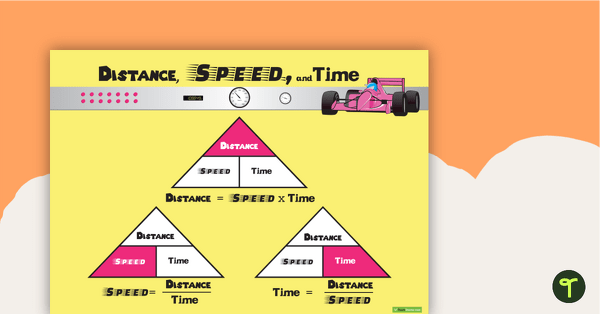Motion Teaching Resources
Explore the science of motion with printable and digital activities, worksheets and more — created for primary teachers by Australian teachers like you!
Aligned with the Australian science curriculum (including V9), this collection of resources covers everything you need to plan lessons on the different aspects of motion from the speed of an object to the way force affects its movement.
Looking to better understand this part of the science curriculum? Or maybe you just need some handy definitions on hand for introducing your unit on motion? Read on for a primer from our teacher team, including meanings for some key words for teaching about this physical science concept.
What Is Motion? A Kid-Friendly Definition
We'll kick things off with a simple definition of motion that you can use to introduce your lesson to your students:
Motion is the movement of objects or changes in their position over time. Motion is occurring all around us all the time, from the wind blowing to cars rolling by. Even the Earth is in motion, very slowly rotating on its axis beneath our feet.
Teaching About Motion — Key Vocabulary Words
Along with the meaning of motion itself, there are a number of key vocabulary words that tie into how we observe and measure motion. Keep these definitions handy to help describe them to your students!
Distance Definition
When we measure motion, one key word we use is distance. Distance is how far an object has moved from its starting point.
For example, if a student is standing beside her desk and walks to the door of the classroom, the space between the desk and the door could be measured to determine the distance of her movements or motion.
Speed Definition
Another important word to define when studying motion is speed. Speed is how fast an object moves when it is in motion.
For example, when you are in a car that drives from your home to school, it will travel at a certain speed. That speed helps determine how quickly the car moves from one place to the other.

We measure speed in units per hour, such as metres per hour or kilometres per hour.
Direction Definition
The direction of motion is also key to understanding this physical science concept. Direction is which way an object is moving.
We use words like east or west, up or down and forward or backward to describe direction.
What Are Activities That Show Motion?
We already touched on the motion of the wind and cars, but some more examples of activities that show motion are always useful! Here are some everyday activities that many of our students engage in that show motion:
- Walking
- Jumping
- Climbing
- Riding a bicycle
- Skateboarding
- Kicking a soccer ball
- Plus Plan

Sink or Float Investigation Worksheet – Match Up
A match-up worksheet to explore whether items sink or float.
- Plus Plan

Distance, Speed, and Time- Poster
A poster with distance, speed, and time equations.
- Plus Plan

Living Things Need Food
A 60 minute lesson in which students will investigate how plants and animals get energy to survive.